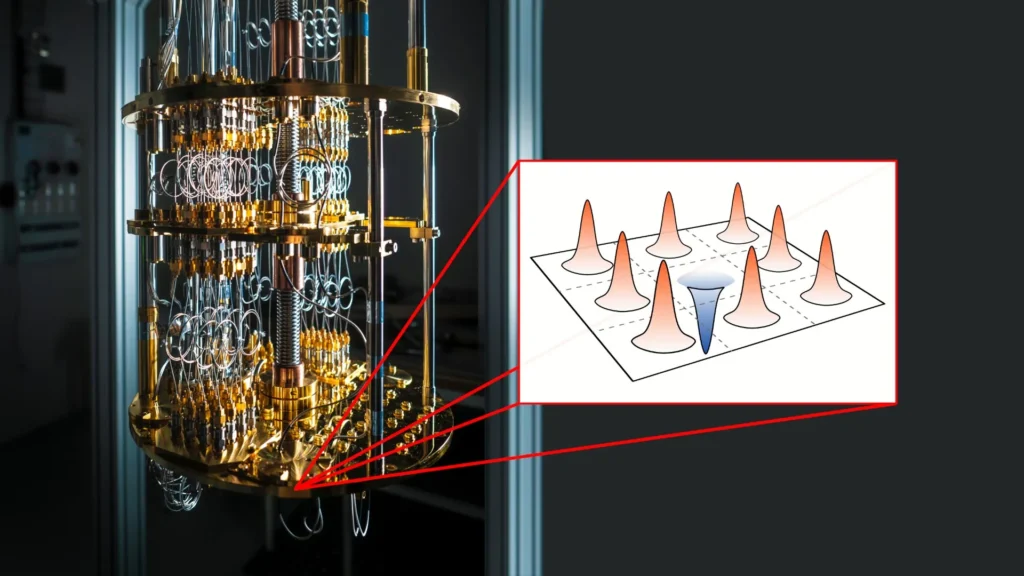Quantum computers still face a major obstacle in the path to practical use cases: their limited ability to correct computational errors that occur. To develop truly reliable quantum computers, researchers must be able to simulate quantum computing using conventional computers to verify their correctness – a crucial but very difficult task. Now, in a world-first world, researchers from the Swedish Technical University, the University of Milan, the University of Granada and the University of Tokyo have unveiled a method to simulate specific types of error-corrected quantum computing – a significant leap in seeking powerful quantum technologies.
Quantum computers have the potential to solve complex problems that cannot be handled today. In the foreseeable future, the computing power of quantum technology is expected to revolutionize the fundamental approaches to solving problems in medicine, energy, encryption, AI and logistics.
Despite these commitments, the technology faces a significant challenge: errors need to be corrected in quantum computing. Although traditional computers also encounter errors, good technology can be used to correct these errors quickly and reliably before causing problems. In contrast, quantum computers suffer more errors and are therefore difficult to detect and correct. Quantum systems still do not tolerate failures and are therefore not fully reliable yet.
To verify the accuracy of quantum computing, the researchers used conventional computer simulations or simulation calculations. Therefore, a particularly important type of quantum computing that researchers are interested in simulation is a quantum computing that can withstand interference and effectively correct errors. But the enormous complexity of quantum computing makes such simulations extremely demanding—so much so that in some cases even the best traditional supercomputers in the world would spend the age of the universe to reproduce the results.
Researchers at the University of Technology, the University of Milan, the University of Granada and the University of Tokyo have now become the first in the world to propose a method of accurately simulating some type of quantum computing that is particularly suitable for correcting errors, but so far it has been very difficult simulations. This breakthrough solves long-term challenges in quantum research.
“We have discovered a way to simulate a specific type of quantum computing where previous methods have not been effective. This means that we can now simulate quantum computings with an error correction code used for fault tolerance, which is cruel for being able to build better and more robust quantum computers in the future,” says Cameron Calcluth, PhD in Applied Quantum Physics at Chalmers and first author of a study recently published in Physical comment letter.
Error Correction Quantum Computing – Harsh But Crucial
Quantum computers have limited ability to correct errors, which stems from their basic building blocks – Qubits – which have huge computing power, but also highly sensitive. The computing power of a quantum computer depends on the superimposed quantum mechanical phenomenon, which means that qubits can keep values 1 and 0 and all intermediate states in any combination at the same time. With each additional quantum, computing power grows exponentially, but the tradeoff is their extreme sensitivity to interference.
“Small noise generated in the form of vibration, electromagnetic radiation, or temperature changes can cause Qubits to miscalculate and even lose their quantum state, thus coherent, and thus lose the ability to continue to calculate,” Calcluth said.
To solve this problem, error correction codes are used to distribute information on multiple subsystems, allowing error detection and correction without destroying quantum information. One approach is to encode the quantum information of the value into multiple – possible infinite energy levels of a vibrating quantum mechanical system. This is called bone code. However, simulating quantum computing using skeletal code is particularly challenging due to multiple energy levels, and researchers have been unable to reliably simulate them using conventional computers – so far.
New mathematical tool keys in researchers’ solutions
The method developed by the researchers consists of an algorithm that is able to simulate quantum computing using a type of (Gottesman-Kitaev-Preskill (GKP) code). This code is often used to lead the implementation of quantum computers.
“The way it stores quantum information makes it easier for quantum computers to correct errors, making them less sensitive to noise and interference. GKP codes are very difficult to simulate using conventional computers because of their deep quantum mechanical properties. But now, we finally find a unique approach to Quielia ferrini ferrini ferrini, ferrini ferrini, ferrini fertial ant than before,” said co-author of the study.
The researchers managed to use code in their algorithms by creating a new mathematical tool. Thanks to the new method, researchers can now more reliably test and verify the computing of quantum computers.
“This opens up a completely new way to simulate quantum computing that we couldn’t test before, but is critical to being able to build stable and scalable quantum computers,” Ferrini said.
More information about the research
The article’s classic simulation of circuits has a realistic odd Gottsman-Kitav Preskier state, which has been published in a letter for physical review. The authors are Cameron Calcluth, Giulia Ferrini, Oliver Hahn, Juani Bermejo-Vega and Alessandro Ferraro. Researchers are active in Chalmers Technical University in Sweden, the University of Milan, Italy, the University of Granada, Spain and the University of Tokyo, Japan.
